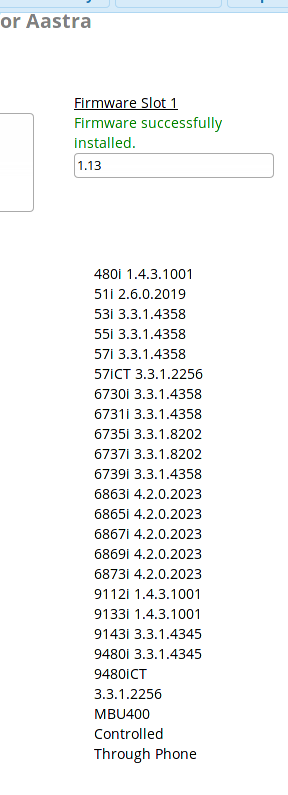I have a few Aastra 6739i phones a polycom vvx311 and vvx 610 and yealink t20
Originally, I thought how hard can this be to set up a pbx system to replace a key system programmed with switches and leds.
Two months later and I know the answer. Not happening; or become a phone expert.
My set up, new cable modem with built in router, level 3 cisco 12 port poe, before mentioned phones.
I have made errors; and I can’t find any more. I called some people and was recommended to try asterisk 16. It didn’t help and before updating, my polycom phone wouldn’t reboot after a bunch of the Unreachable errors in the asterisk log. Now even polycom reboots. Aastra weathers some errors but always ends up unresponsive. Aastra watchdog logs nothing with debug 1 - 4 or 7 mode
FreePBX log
[2019-08-01 19:03:42] VERBOSE[9821] res_pjsip/pjsip_options.c: Contact abc/sip:[email protected]:5060 is now Unreachable. RTT: 0.000 msec
Polycom has some phone side logs;
All the number of packets are used!! Packet tossed
At this point. I have tried session timer off and qualify off and aoe 160sec. All phone are internal network. With asterisk 13.2.2 it would take maybe 10-12 hours after a server restart for the errors to cause a phone crash.
Freepbx has firewall set with internal network open and dns 127.0.0.1
Aastra (mitel) phones last had a firmware update in 2016.
I set up a phone with chan sip and it almost never has a moment of Unreachable.
Have I run into a first time setup that messes with incompatible technology? Aastra is too old to use pjsip with asterisk?
Cisco switch is setup with express settings and vlan set to special code that instructs ports to be level 2.
Aastra has 7 extension/lines programmed. And Polycom 3 extensions. I meant to try counting how many lines it take to crash a phone. Because I thought at some point I tried just one line and had better luck.
All soft buttons removed didn’t help.
I tried another pbx software to see how their extension manager set up the aastra phones. That is another story. Short: aastra with their settings on pjsip and freepbx crashes. Long: lightning struck while I was out and fried my 4 port testing poe switch, atx power supply, and more. Now my pbx with extension manager is offline till I remember where my spare atx psu was put. Can Ethernet surge? My power supplies were on a surge power strip off of a rack mount surge protector…
This has become a bit of a ramble. So should I assume aastra isn’t going to work with pjsip and a different extension on every line?
Well before i left and lightning struck, I noticed the status on a crashing aastra was reading 408 instead of registered. Back to buddy Google.
